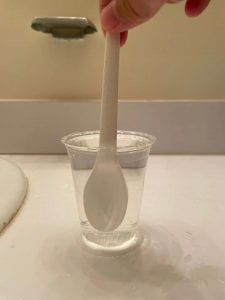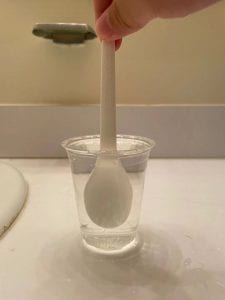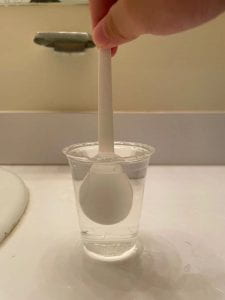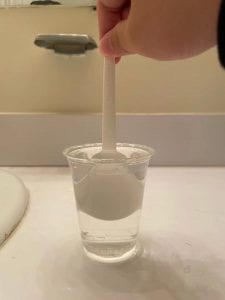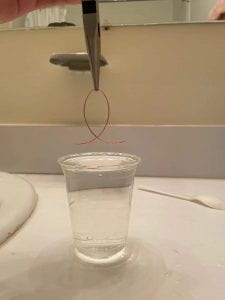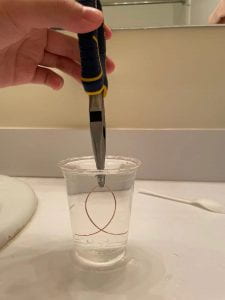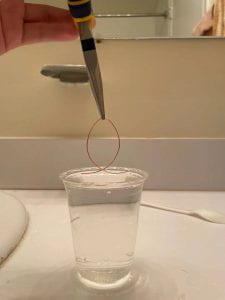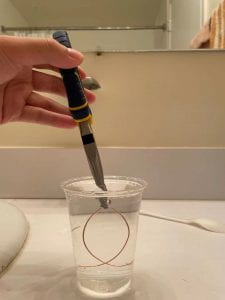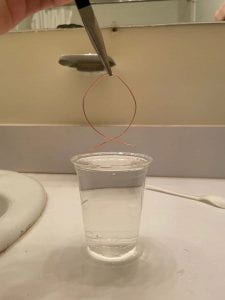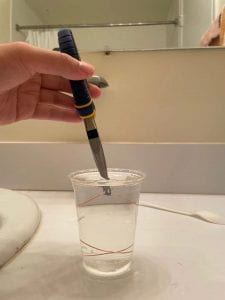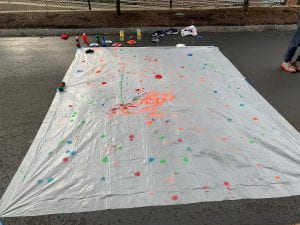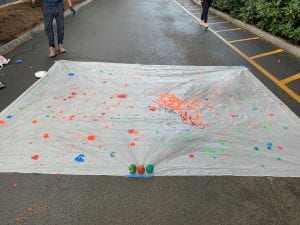When I initially pitched my score in class, something felt wrong. It didn’t feel like it reflected what I wanted my projects for this class to be, and I felt empty repeating the score that I had created with the only inspiration being that I like dice. As I paced around in my apartment after class, I remembered part of Diary of a Wimpy Kid that resembled a score. A teacher tasked the class with designing a robot, specifically what functions a robot should perform. The first thing that the class thought of was words that the robot shouldn’t be allowed to say. And as they got caught up in writing down a list of swears words the robot wouldn’t say, eventually class ended, and all they had to show for their work was a list of swear words. While I quickly realized that I shouldn’t replicate that exactly, I liked the general idea. I then remembered a bit from the podcast Chapo Trap House where one host jokes about shooting a movie trailer designed to be really popular at the time, but once people buy tickets and watch the movie in the theater it’s just him saying “I lied, there’s no movie, but hear me out and why I should have the money to buy a samurai sword”. I decided that something like that was more appropriate for class as a fun final iteration of my score.
With the assurances in class that happenings count as art, and that as long as you do the readings and turn in something based on them you can get a good grade, I went to work on constructing my actual score. I wanted to work in the question of whether or not I cared about my grade into the art, such as using it to create an expectation that I did make a video of my score being done only to tear that down by having it be the rickroll video and hastily writing up a score after my presentation as a last ditch attempt to save face but then showing that that was part of my actual score which had been written before class.
If my commitment to this class and my grade in it remains unclear let me clarify. I did not read or make any attempt to acquire Grapefruit by Yoko Ono until the day before the playable iteration of the score was due in class. When I did look through it, I only planned to try to use it to relate my dice score to the room piece during my presentation, which I didn’t end up doing anyway. However, I did follow Yoko Ono on twitter well before this. I’m not saying that my piece was some revolutionary art independent piece independent from these past movements. On the contrary, I think it reflects that same spirit. Despite my procrastination of Grapefruit, I did do the other readings, and similar to the music created using modified or broken instruments, my presentation was the result of a modified and broken score. The meta-score of “Perform a happening consisting of lies, deception and trickery. Write a score documenting the process after the fact” served as a mechanism to modify and break my original score, which resulted in the drawing and video I presented in class.
Attached below is the link to the presentation I showed in class, the score I hastily wrote up after, and the score I wrote up before showing that it was planned the whole time.
Proof I followed Yoko Ono on Twitter
Addendum: I saw the “Let’s Try This Again” email and I kinda sent some mixed messages pertaining to doing the readings so I’d like to add a new point. I remember in class the patch to the nude raider patch that added the Duchamp goatee to the naked Lara Croft model was mentioned, and although I didn’t say it at the time, I remember that patch was also mentioned in the Games As Art reading we were assigned that was written by none other than our great professor Celia Pearce. Furthermore, I am channeling the spirit of that patch right now. This addendum is the patch to a patch goatee added onto my dumb score project, which I have argued above is already a modification to the idea of scores themselves. The only difference is that my original project did not objectify or sexualize women. If this difference is enough to refute my claim that my work pertains to the art, readings, and themes of the class, then that is a sacrifice I probably should make rather than try to argue that my original project objectifies and sexualizes women.
Addendum Documentation:


